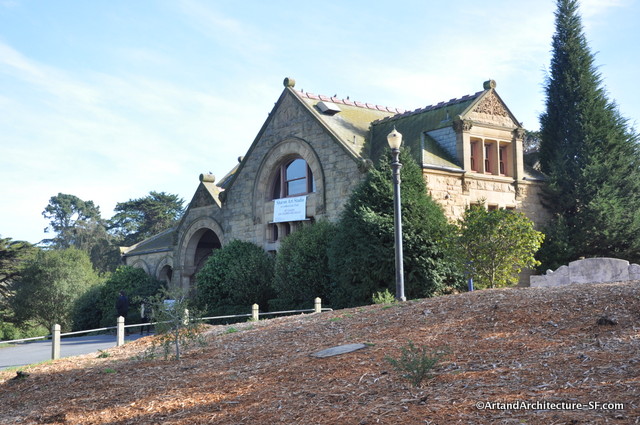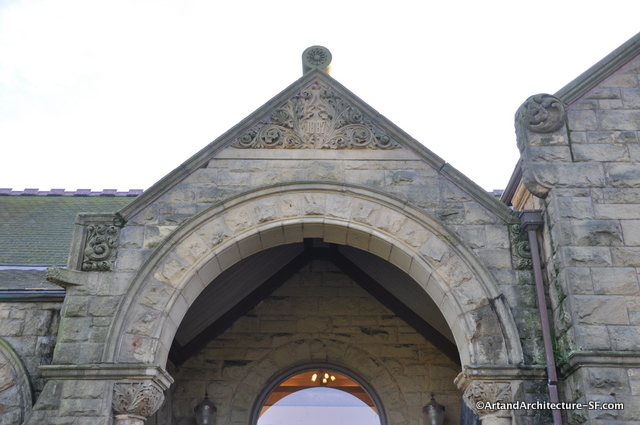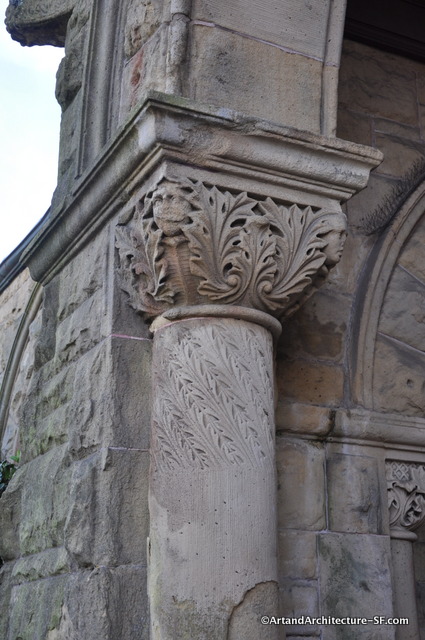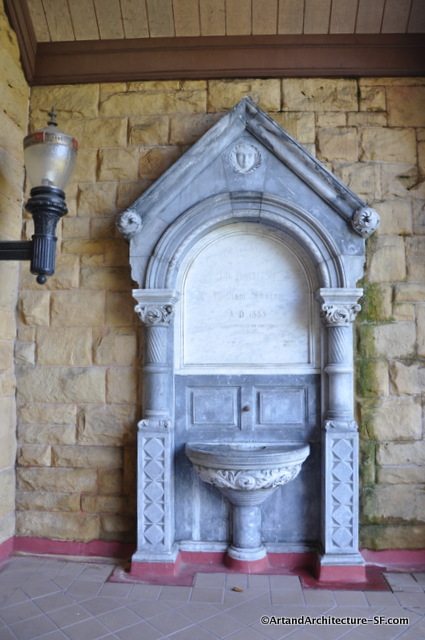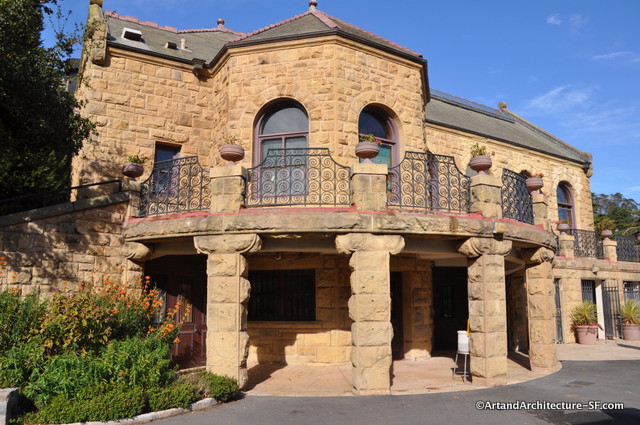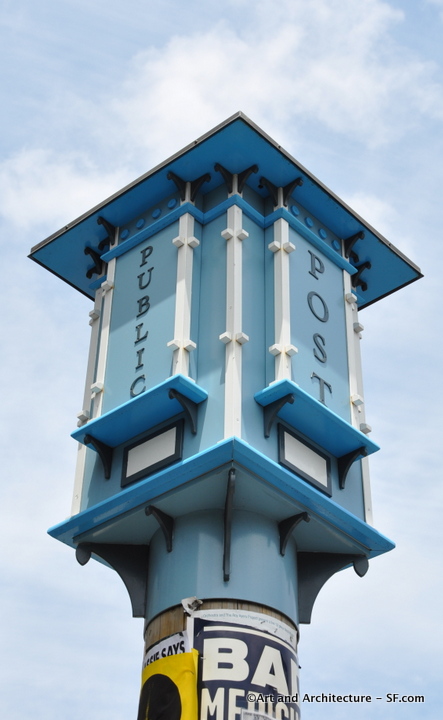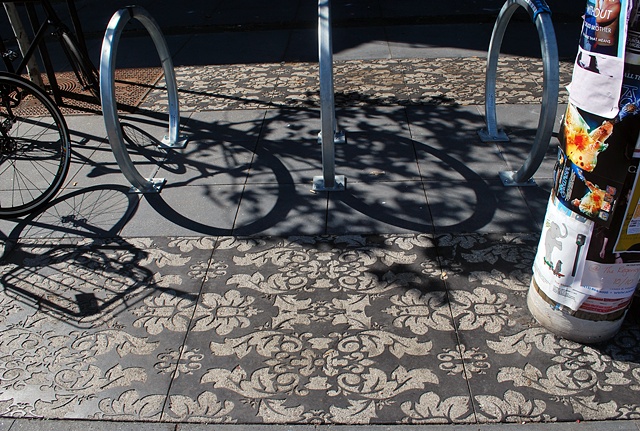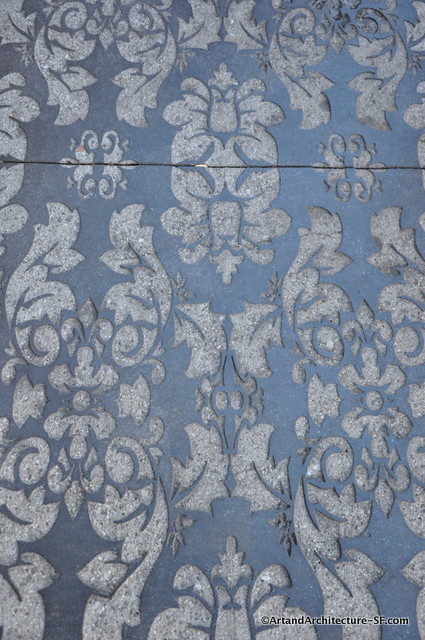This delightful example of what some say is Victorian Romanesque architecture and others say is Richardsonian Romanesque, was designed by architects George Washington Percy and Frederick F. Hamilton. The building is the result of a $50,000 donation from silver baron, Nevada senator, and unscrupulous bank owner, William Sharon. The building and the intent of the donation, included a playground.
The building was originally intended to give families with children a place to play indoors and have refreshments during inclement weather, it now houses the non-profit Sharon Art Studio, offering art classes in various mediums to both adults and children.
Damaged terribly after the 1906 earthquake, and again by a fire in 1974 that gutted the interior and another fire in 1980 which did damage to the structure, the building was finally renovated in 1992.
According to the San Francisco Encyclopedia:
Frederick F. Hamilton was born in Addison, Maine in 1851. He began work in 1866 as a draftsman in the office of Boston architect and book illustrator Hammatt Billings. In September 1875 he journeyed out to California and worked on the ill-fated San Francisco City Hall, then under the direction of original architect, Augustus Laver. That building took 20 years to complete, but, when the earthquake of April 18, 1906 shook it apart, was found to have been very badly constructed. In 1878 Hamilton traveled back east, but returned again to San Francisco in 1879. He joined fellow Maine native, George W. Percy, in partnership in January 1880.
Percy was Hamilton’s senior by four years, having been born in 1847, in Bath, Maine. He apprenticed with prominent Portland, Maine architect, Francis H. Fassett, from 1866 until 1870, when he came out to California to work in Stockton for two years. In April 1872 he relocated to Chicago to work on the rebuilding of that city following the great fire of October 1871. Percy made his final move out to San Francisco in September 1875, opening his own office in the City until the partnership with Hamilton was formed in 1880. Theirs was one of the city’s most highly regarded Victorian architecture partnership.
